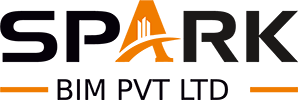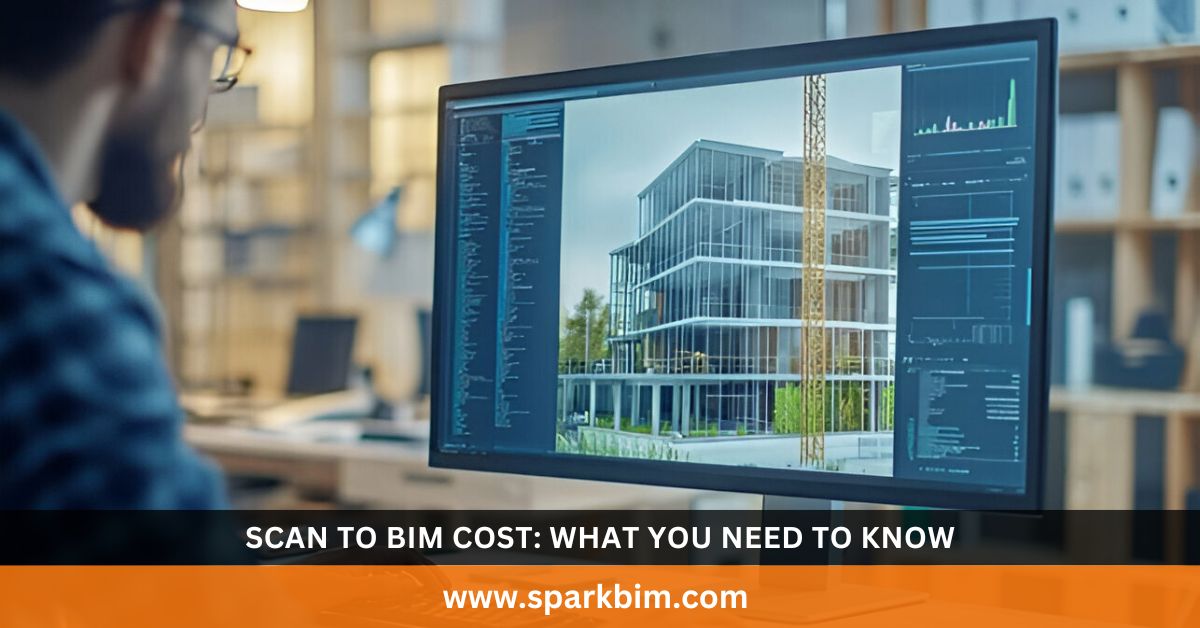Table of Contents
ToggleIn today’s fast-paced construction and design industry, technology enables professionals to work more efficiently and accurately. One of the biggest tools changing the game is Scan to BIM, also known as reality capture, combined with BIM services.
It helps builders, architects, and engineers turn real buildings into smart digital models. This process facilitates easier planning of renovations, effective facility management, and the avoidance of costly mistakes. But when people hear about it, one of the first things they ask is: What is the Scan to BIM cost?
If you are curious, confused, or want to learn more, this guide explains the full story behind Scan to BIM cost without any tricky terms or numbers. Whether you’re a student, a homeowner, or a professional, you will find this easy to follow.
What is Scan to BIM
Scan to BIM stands for “Scanning to Building Information Modeling.” This means turning a real-world building into a 3D digital model. Here’s how it works: professionals visit a building and use special tools, such as 3D laser scanners, to capture the entire space. These scanners collect millions of data points.
Together, these data points form what is called a point cloud. This point cloud looks like a digital version of the building. Experts then use BIM software to turn the point cloud into a complete 3D model. The BIM model shows walls, floors, doors, windows, pipes, and even cables, depending on how much detail the project needs.
The Building Information models help teams design changes, check for problems, and plan future projects. Unlike old 2D drawings, BIM models give a full picture of the space. And unlike guessing or measuring by hand, scanning is fast and accurate. That’s why many professionals now use it.
Why Scan to BIM is Important
Using Scan to BIM helps people avoid problems and save time. In the past, people would measure buildings by hand and draw them on paper. This method takes a long time and often leads to errors. These errors can cause big issues later, such as cutting into the wrong wall or missing a pipe.
With Scan to BIM, teams get a clear and accurate view of the building from the start. This model acts like a guidebook for the whole project. It shows what’s real, what’s possible, and what could go wrong. As a result, everyone—from architects to plumbers—works better together.
Also, if something changes later, it’s easy to update the model. This makes it perfect for as-built documentation and future building maintenance. Because it offers so many benefits, people want to know what affects the Scan to BIM cost and how they can prepare for it.
What Affects the Scan to BIM Cost
The Scan to BIM cost changes from one project to another. There is not one fixed price. Instead, many things affect the cost, and it helps to know what they are before you start your project.
1. Size of the Building
Bigger buildings take more time to scan. They also take longer to model. For example, scanning a simple, small office is much quicker than scanning a large hospital. Each room, hallway, or mechanical system adds time and effort.
The more space there is, the more work goes into creating the model, which can increase the overall Scan to BIM cost.
2. Level of Detail (LOD)
Not every project needs the same amount of detail. Some projects only need the basics – walls, doors, and windows. Others need very detailed models that include pipes, air systems, electrical lines, or equipment.
The more detailed the model, the longer it takes to create. The Level of Detail, or LOD, directly affects the time needed to finish the model, which also impacts the Scan to BIM cost.
Also Read, Why AEC Professionals Prefers Outsourcing Scan to BIM
3. Building Type and Purpose
Different types of buildings bring other challenges. A warehouse may be easy to scan because it’s open and simple. A school or hospital, however, might be more complex, with many rooms, systems, and furniture.
Depending on your building’s use, you may need more detail or different kinds of modeling. All of this shapes the total Scan to BIM cost.
4. Site Conditions
Sometimes, the condition of the site makes scanning harder. For example, a building under construction, an old abandoned site, or a busy office with people working inside can slow things down.
In tight or unsafe areas, workers must be extra careful. These conditions can require more time and equipment, which may increase the Scan to BIM cost.
5. Data Quality and Post-Processing
Laser scans often capture a huge amount of data. But this raw data isn’t always perfect. Sometimes, the scan includes extra details, noise, or areas that are not useful. Experts have to clean the point cloud before they can start modeling.
The cleanup process, called post-processing, is part of what makes Scan to BIM services effective, but it also adds to the total time and cost.
Scan to BIM Cost vs. Traditional Methods
Some people still use traditional methods, like taking manual measurements and drawing them on paper or using simple CAD software. These old ways may look cheap at first. But when you add up the time spent measuring, rechecking, fixing errors, and updating plans, it quickly becomes more costly and stressful.
With Scan to BIM, you get things right from the beginning. You avoid mistakes and rework. Even though the Scan to BIM cost may seem like more at first, it often saves time, money, and effort in the long run. You also get better results, which means fewer delays and fewer problems.
Who Uses Scan to BIM
Scan to BIM helps many people across different industries. It’s not just for big companies. Even small contractors and local architects use it today.
Here are some examples:
- Architects use it to plan new layouts and designs with confidence.
- Engineers depend on it for structural and mechanical analysis.
- Contractors use Scan to BIM to check the site before starting work.
- Facility managers use the model to track changes and plan upgrades.
- Historic preservationists use it to document and protect old buildings.
Each of these professionals benefits in different ways, but they all find value in knowing the true layout of a space. That’s why the Scan to BIM cost is worth it for so many different teams.
How to Plan for Scan to BIM Cost
1. Know Your Goals and Project Requirements
Before you even contact a service provider, take time to define what you want from the BIM model clearly. Think about your main goals. Are you planning a simple renovation? Do you need a full building model for facility management? Or are you preparing for future upgrades?
The more specific you are, the better. If your project only needs a basic floor plan, there’s no reason to ask for complex details like electrical lines or air ducts. On the other hand, if you are remodeling an entire building, you’ll need a more detailed model.
Having clear goals not only helps you get accurate results but also prevents paying for unnecessary features. It allows the provider to estimate the Scan to BIM cost more accurately and avoids scope changes later in the project, which can be expensive and time-consuming.
2. Work with the Right Scan to BIM Team
Choosing the right service provider is just as important as knowing what you want. Not all providers have the same skills or experience. Some may specialize in residential buildings, while others might be experts in commercial or industrial spaces.
Take time to research and compare providers. Look at their past projects. Ask for case studies or examples. Talk to their previous clients if you can. A good provider will not only scan and model your building but also guide you through the process, explain technical terms, and offer valuable advice.
Working with a skilled and trustworthy provider helps reduce delays, avoids costly errors, and makes sure you get the best value for your Scan to BIM cost.
3. Plan Your Timeline and Be Realistic
Scan to BIM is a process that takes time, from site scanning to data processing and model creation. If your schedule is tight, it’s even more important to plan early.
Many projects get delayed because the Scan to BIM service was booked too late. If you rush the process, you may have to pay extra for fast delivery or end up with lower-quality results. That’s why you should set a realistic timeline from the start.
Talk to your provider about how long each step will take. Make sure their timeline fits your overall project plan. A well-timed scan can keep your construction or design process on track, which saves money and avoids stress later on.
Proper planning also allows the team to work more efficiently. They can visit the site at the best time, avoid busy hours, and capture better-quality scans without distractions.
4. Decide on the Level of Detail Early
The Level of Detail (LOD) in your model plays a big role in the Scan to BIM cost. More detail means more modeling time. That’s why you need to decide early how much detail your project needs.
For example, a building used for storage might only need a basic structure model (walls, doors, windows). But a building used for medical work may require a very detailed model, including mechanical, electrical, and plumbing systems (MEP modeling).
By deciding this early and sharing it with your provider, you avoid changes during the project. Changing the LOD midway can lead to extra work, confusion, and higher costs.
Communicating your LOD needs upfront also helps the Scan to BIM team choose the right scanning tools and software from the beginning, leading to a smoother workflow and better final results.
5. Make the Most of the BIM Model Post-Project
Once you receive your BIM model, don’t just file it away. A good model is a long-term asset. It’s useful not only during design and construction but also for managing the building after the project is done.
You can use it for as-built documentation, regular maintenance, inspections, and even safety planning. If you ever sell the property, the model can serve as proof of the building’s true condition.
By using the model well beyond the construction phase, you increase its value over time. This makes the Scan to BIM cost more worthwhile. Think of the model as a digital twin of your real building – a tool that grows more useful the longer you use it.
So, ask your provider to deliver the model in formats that work for your future needs. Make sure your team understands how to access and update the file. With just a little training, even people who aren’t tech experts can benefit from using a BIM model in everyday work.
SparkBIM - Scan to BIM Services Provider Company
SparkBIM is a trusted Scan to BIM services provider company, offering accurate and high-quality 3D modeling solutions for architects, engineers, contractors, and building owners.
We specialize in converting point cloud data from laser scans into detailed BIM models that support design, renovation, and facility management processes. We offer our Scan to BIM Services in USA, UK, Europe, Canada, Australia, the Middle East, and worldwide.
At SparkBIM, we focus on precision, speed, and clarity. Our team uses advanced reality capture tools and the latest BIM software to deliver models with the Level of Detail (LOD) that best fits your project needs. Whether you are working on a residential renovation, commercial upgrade, or a large-scale industrial retrofit, SparkBIM ensures that your digital model reflects real-world conditions exactly.
Clients choose SparkBIM for reliable results, smooth communication, and industry-ready deliverables. Our Scan to BIM services help reduce construction errors, cut rework, and speed up project timelines. We work closely with you from the first scan to the final BIM file, so you always know what to expect.
If you are looking for a professional Scan to BIM partner who values quality and transparency, SparkBIM is here to help. Let us turn your existing space into a smart, digital model that supports smarter decisions and better outcomes.
The Real Value Behind the Scan to BIM Cost
When you think about the Scan to BIM cost, try to look beyond just the amount of money. What you are getting is a tool that helps you work smarter. You avoid surprises. You save time. You reduce stress. And you build with more confidence.
The model you get from a Scan to BIM service is not just a one-time tool. It can help you again and again. Use it when planning repairs, checking building codes, or even selling the property. The digital model becomes part of your toolkit.
Conclusion
Understanding the Scan to BIM cost helps you prepare for better results. Whether you’re building something new or fixing something old, this technology gives you a better way to start. The cost is not just a number – it is an investment in accuracy, safety, and success.
More and more builders, architects, and property owners are turning to Scan to BIM because it works. And as the tools get better and faster, the value you get for your money will only improve.


